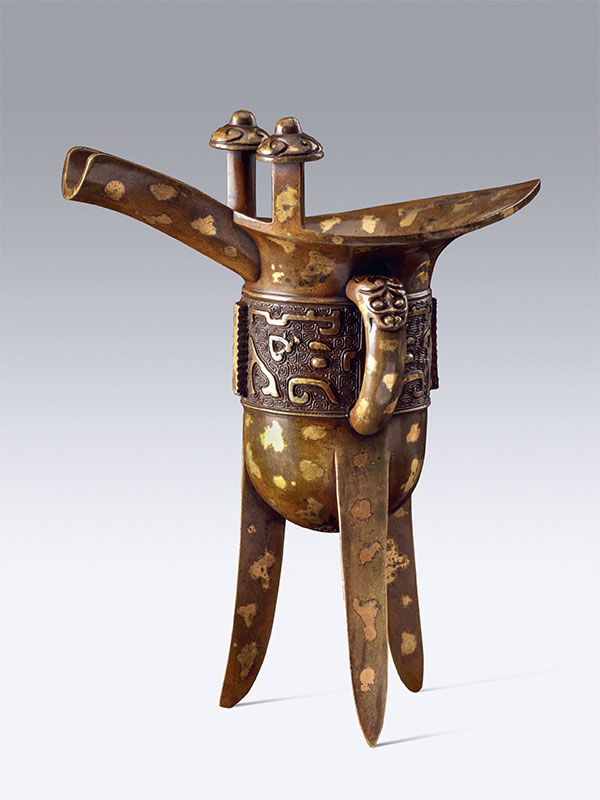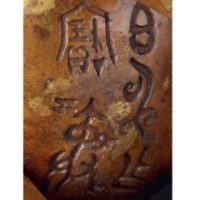Bronze gilt-splashed wine vessel, jue
China, Qing dynasty, 17th-18th century
A bronze gilt-splashed wine vessel, elegantly shaped as an archaic ritual vessel known as jue. Supported by three elongated, tapered legs, the vessel features two short posts cast on the mouth rim and a loop handle with a mythical animal head.The body is finely cast with a band of archaic taotie motifs on a leiwen background, divided by two raised flanges with toothed edges. The underside of the vessel bears the archaic inscription Boshen zuo baoyi, which can be translated as ‘Boshen made this treasured wine vessel’. The entire surface is patinated to a rich golden-brown colour and covered with irregular gilt splashes.
For the literati scholar, archaic bronzes and their inscriptions constituted a unique source to access a distant past, and to display knowledge and culture. For this reason, wine vessels referencing the libation vessel jue from the Shang and Zhou dynasties were produced and collected during the Ming and Qing dynasties. The prototype of the present vessel is represented in multiple museum collections, including an example in the Metropolitan Museum of Art, accession number 49.135.15. A near identical bronze wine vessel is illustrated in Tsang and Moss.[1]
Provenance:
Formerly in the collection of Hedda and Lutz Franz
Christie’s Hong Kong, 30 April 2001, lot 771
- Tsang, G. and H. Moss, Arts from the Scholar’s Studio, Hong Kong 1986, pl. 161, p. 185.


